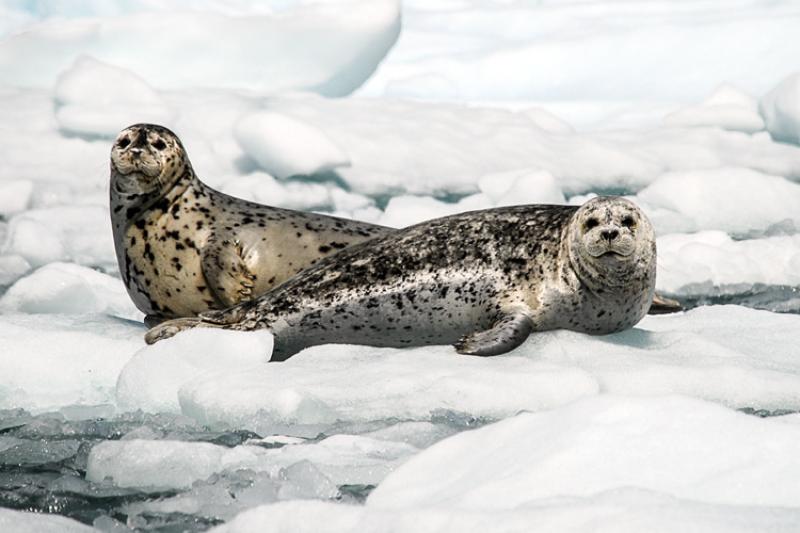Tidewater glacial fjords in Alaska provide habitat for some of the largest aggregations of harbor seals in the world. With seals drifting on ice calved from glaciers, these areas are quite dynamic and thus challenging to study. They’re also a popular destination for tour ships. In fact, there has been a 10-fold increase in tour ship traffic into these areas since the 1980s. All of this activity disturbs seals that use floating ice in the fjords to rest, molt, give birth and nurse their young.
NOAA Fisheries scientists recently published new findings from a long-term study in Disenchantment Bay. Their findings may help to reduce impacts on seals at Disenchantment Bay and at other glacial fjords, some two dozen throughout Alaska.
Join us for a Tweet Chat with NOAA Fisheries research biologist, John Jansen, the lead author on this important, new study. You’ll have a chance to ask questions and hear more on what he and the rest of his team learned.
John Jansen

NOAA Fisheries research biologist John Jansen. Photo NOAA Fisheries.
John works with the Alaska Fisheries Science Center’s Polar Ecosystems Program. His primary interests are in behavioral and physiological ecology, and how top predators adapt to changing and challenging environments, particularly when balancing the demands of offspring.
Prior to joining NOAA Fisheries, John worked on a range of wildlife including birds in the Florida uplands, sharks and marine mammals in the Pacific North West, and tuna in the South Pacific. Since joining NOAA, he has led research on penguins in the Southern Ocean and harbor seals in Alaska, and collaborated on numerous projects examining the ecology of ice seals in U.S. Arctic.
Additional Resources
- Spatially Estimating Disturbance of Harbor Seals
- Natural and Human Effects on Harbor Seal Abundance and Spatial Distribution in an Alaskan Glacial Fjord
- Reaction of Harbor Seals to Cruise Ships
- Acting on Short-Term Disturbance to Seals Amidst Uncertainty About Long-Term Impacts and Vessel Compliance Under the U.S. Marine Mammal Protection Act
- Estimating Productivity and Pup Growth Using Aerial Imagery of Harbor Seals on Ice
- Using Aerial Photo-Mosaics to Track Changes in Abundance of Harbor Seals on Ice
- Disturbance of Harbor Seals in Disenchantment Bay, Alaska

